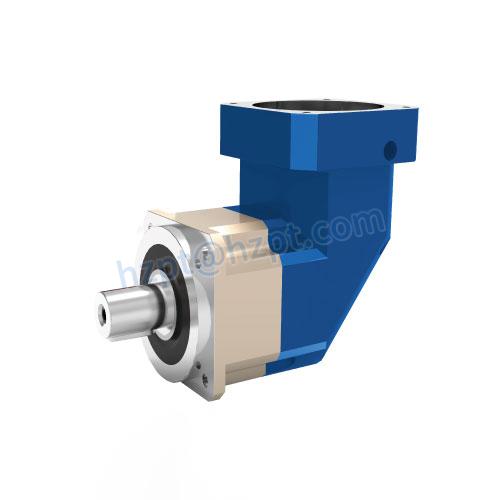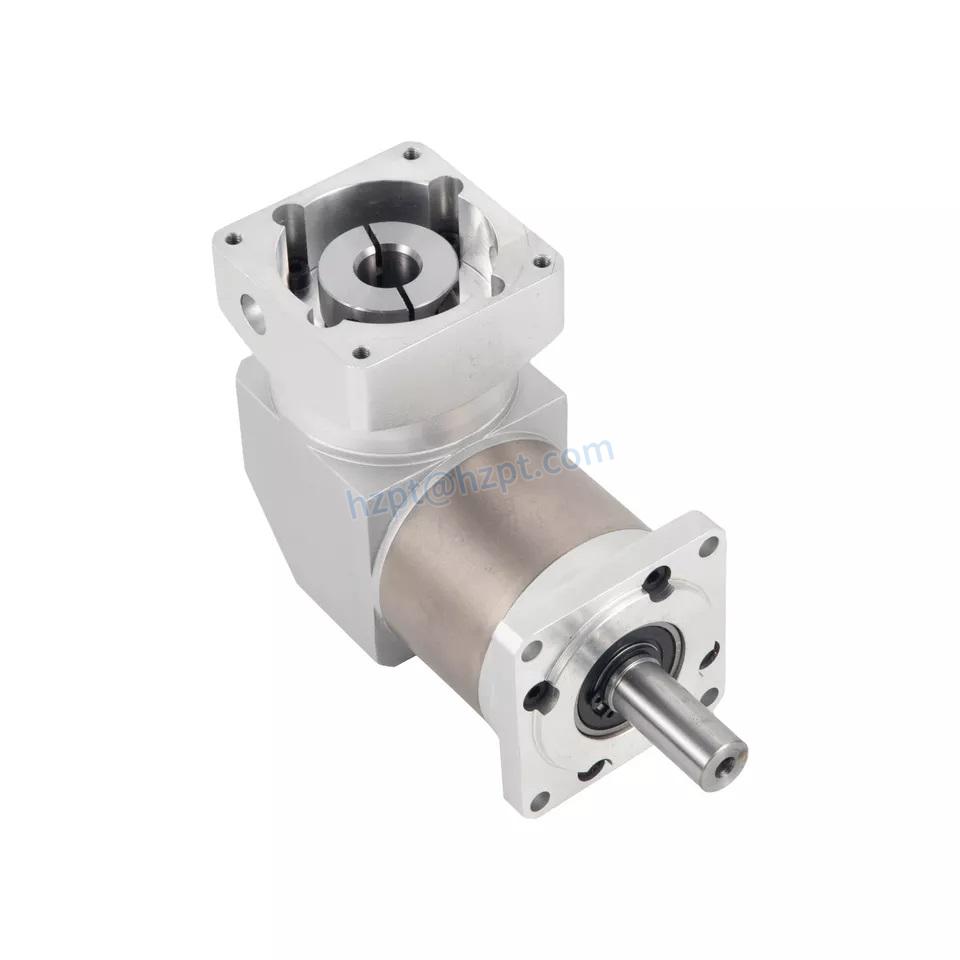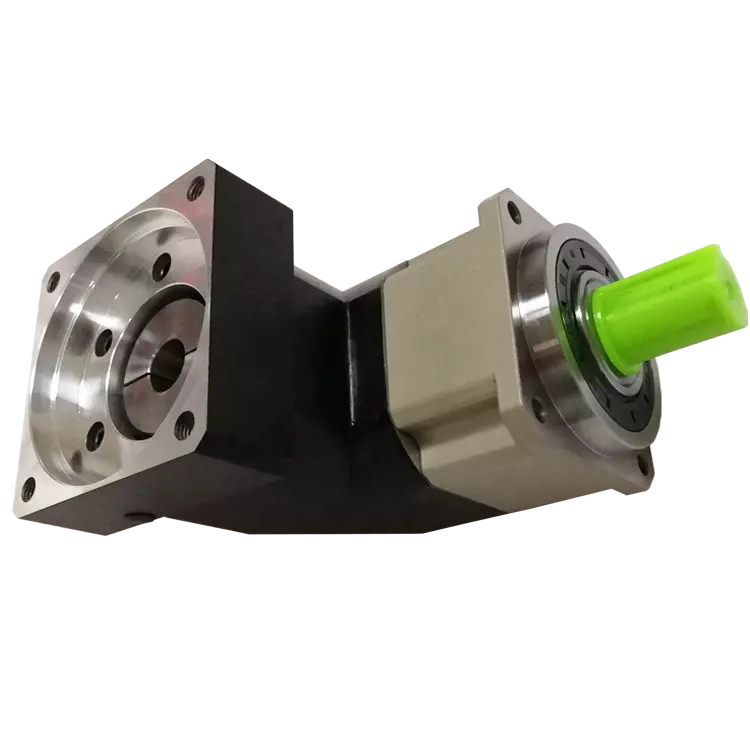Product Description
Precision planetary gear reducer is a new-generation of product developed by our company, with a compromise of advanced technology both at home and abroad, its main features are as follows:
1. Low noise: under 65db.
2. Low backlash: within 3 arcmin.
3. High efficiency: 97% for 1 stage, 94% for 2 stages.
4. High input speed: Rated input speed 3000rpm, max input speed 6000 rpm.
5. High output torque: higher torque output than that of conventional planetary gear reducer.
6. High stability hardening,which extends gear service life and maintain high accuracy as new after a long period of operation.
Precicion planetary gear reducer is widely used in the following fields:
1. Aerospace industries.
2. Medical health, electronic information industries.
3. Industrial robots, productin automation, CNC machine tool manufacturing industries.
4. Motor,textile,printing,food,metallurgical,envrironment protection engineering, warehouse logistics industries.
About Xingda since 1984
HangZhou Melchizedek Import & Export Co., Ltd. is a leader manufactur in mechanism field and punching/stamp
ing field since 1984. Our main product, NMRV worm gear speed reducer and series helical gearbox, XDR,
XDF, XDK, XDShave reached the advanced technique index of the congeneric European and Janpanese produc
ts, We offer standard gears, sprockets, chains, pulleys, couplings, bushes and so on. We also can accept orders
of non-standard products, such as gears, shafts, punching parts ect, according to customers’ Drawings or sam-
ples.
Our company has complete set of equipment including CNC, lathes, milling machines, gear hobbing machine, g-
ear grinding machine, gear honing machine, gear shaping machine, worm grinder, grinding machines, drilling m-
achines, boringmachines, planer, drawing benches, punches, hydraulic presses, plate shearing machines and s-
o on. We have advanced testing equipments also.
Our company has established favorable cooperation relationships with sub-suppliers involving casting, raw mat-
erial, heat treatment, surface finishing and so on.
/* January 22, 2571 19:08:37 */!function(){function s(e,r){var a,o={};try{e&&e.split(“,”).forEach(function(e,t){e&&(a=e.match(/(.*?):(.*)$/))&&1
| Application: | Motor, Machinery |
|---|---|
| Hardness: | Hardened Tooth Surface |
| Installation: | Vertical Type |
| Gear Shape: | Helical |
| Step: | Single-Step |
| Type: | Planetary Gear Reducer |
| Samples: |
US$ 230/Piece
1 Piece(Min.Order) | |
|---|
| Customization: |
Available
| Customized Request |
|---|

Ensuring Precision of Gear Tooth Profiles in Angle Gearboxes
Manufacturers employ various techniques and processes to ensure the precision of gear tooth profiles in angle gearboxes:
- Advanced Manufacturing Technologies: Modern manufacturing technologies such as CNC machining and gear hobbing are used to precisely shape gear teeth. Computer-controlled processes enable accurate replication of gear tooth profiles.
- High-Quality Materials: High-quality materials are selected to create gears that can withstand the stresses and loads they will experience during operation. High-grade metals and alloys are commonly used.
- Quality Control and Inspection: Rigorous quality control measures involve inspecting gear tooth profiles using specialized equipment like coordinate measuring machines (CMMs) and gear analyzers. This ensures that the dimensions and profiles meet the required specifications.
- Tooth Profile Design Software: Engineering software is used to design gear tooth profiles with precision. Computer-aided design (CAD) software allows engineers to model gear teeth accurately before manufacturing.
- Heat Treatment: Gears are often subjected to heat treatment processes such as carburizing or nitriding to enhance their surface hardness, durability, and resistance to wear.
The combination of advanced manufacturing techniques, strict quality control, and the use of quality materials helps manufacturers achieve the necessary precision in gear tooth profiles. This precision is critical to ensure smooth and efficient power transmission, minimal noise, and extended gearbox lifespan.

Selecting the Right Angle Gearbox for an Application
Choosing the appropriate angle gearbox for a specific application involves considering several key factors to ensure optimal performance and reliability:
- Application Requirements: Determine the required torque, speed, and power output of the gearbox to match the demands of the application.
- Input and Output Angles: Identify the desired input and output angles for the gearbox to ensure it can effectively redirect motion as needed.
- Space Constraints: Evaluate the available space to select a gearbox that fits within the allocated area.
- Gearbox Type: Choose the suitable gearbox type (e.g., right angle, bevel, worm, hypoid) based on the application’s specific needs.
- Load Conditions: Consider factors such as load variation, shock loads, and continuous vs. intermittent operation to determine gearbox durability.
- Environmental Conditions: Account for factors like temperature, humidity, and exposure to contaminants, which can affect gearbox performance and lifespan.
- Efficiency: Evaluate the gearbox’s efficiency, as lower efficiency may result in more energy consumption and heat generation.
- Mounting and Installation: Ensure that the gearbox can be easily mounted and integrated into the existing system.
- Maintenance and Servicing: Consider the ease of maintenance, accessibility to components, and availability of replacement parts.
- Budget: Compare the cost of the gearbox with its features and benefits to determine its overall value for the application.
By carefully considering these factors, engineers and designers can select the right angle gearbox that best meets the requirements of the specific application, ensuring optimal performance and longevity.

Handling Variations in Input and Output Angles with Angle Gearboxes
Angle gearboxes are specifically designed to handle variations in input and output angles, allowing for efficient redirection of rotational motion. They achieve this through the use of bevel gears and hypoid gears. Here’s how they handle such variations:
- Bevel Gears: Angle gearboxes equipped with bevel gears can handle changes in input and output angles by using intersecting axes. These gears have conical shapes and teeth that are cut along the cone surface. When the input shaft’s bevel gear meshes with the output shaft’s bevel gear, the intersecting angles allow for smooth power transmission even when the axes are not aligned.
- Hypoid Gears: Hypoid gear arrangements in angle gearboxes can handle larger variations in input and output angles compared to bevel gears. Hypoid gears have helical teeth and axes that are offset from each other. This offset allows for greater flexibility in handling non-parallel input and output shafts.
By employing these gear types, angle gearboxes can effectively manage variations in input and output angles, ensuring that rotational motion is smoothly redirected without compromising efficiency or causing excessive wear on the gears.


editor by CX 2024-04-04
